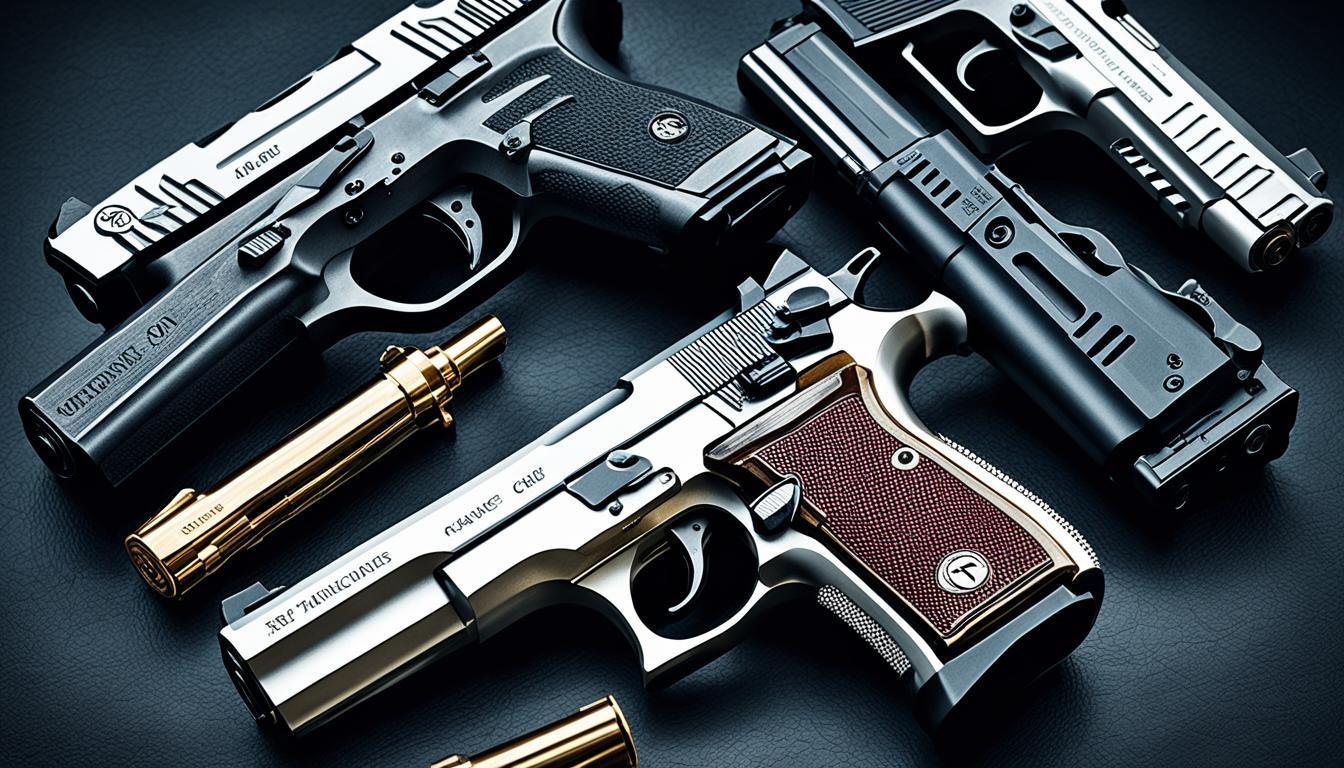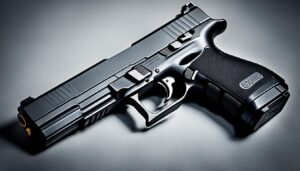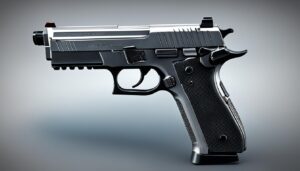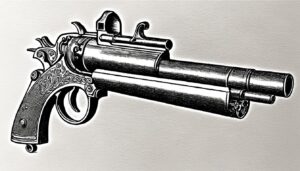As interest in personal security and recreational shooting grows across the United States, so does the curiosity surrounding the cost of handguns. Whether you’re a first-time buyer or an experienced owner considering an additional purchase, understanding the nuances of firearms pricing is essential. From the get-go, it’s clear that prices can vary widely, and every potential gun owner should be mindful of the initial gun ownership costs as well as the ongoing firearm expenses associated with maintenance and training.
But what exactly determines the price tag of these firearms? The answer is not simple, as a multitude of factors come into play. In this introduction, we aim to open the door to a more in-depth discussion by laying the groundwork on the fiscal aspect of procuring a handgun. Stay tuned as we unravel the details behind the dollar signs, guiding you through the complex landscape of the firearms market.
Understanding the Price Range of Hand Guns
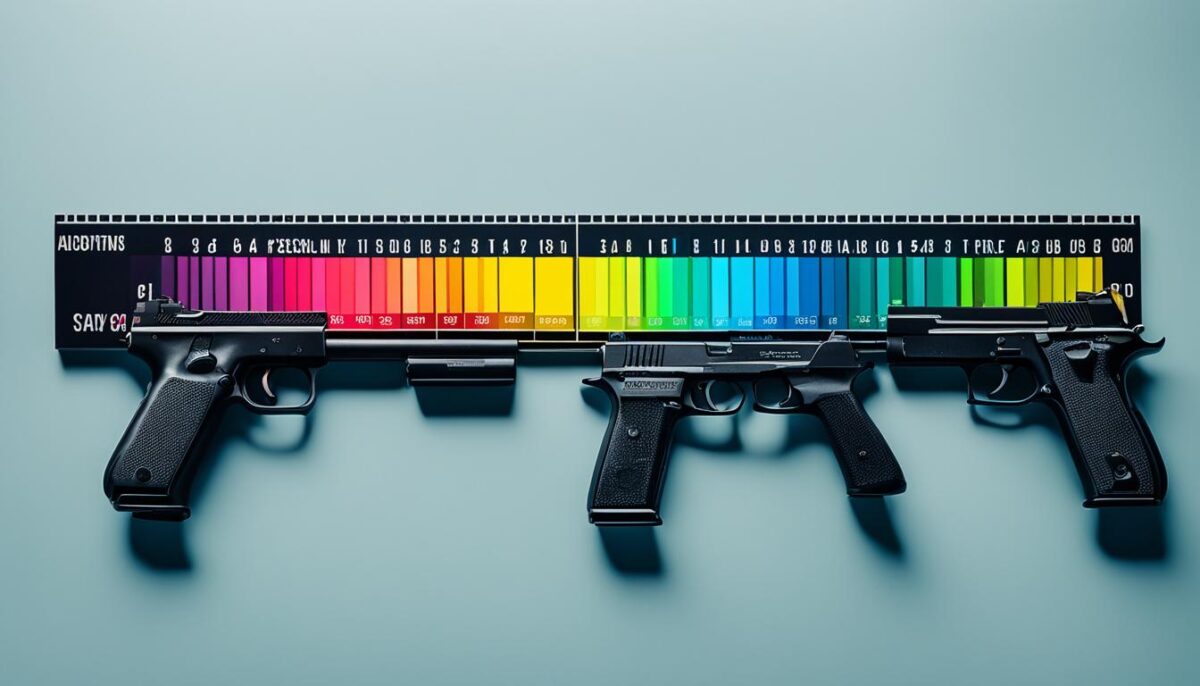
When entering the market for a handgun, potential buyers are faced with a vast array of prices and options. Various market factors, inherent in the demand and supply dynamics, have given rise to price variability. Handgun demand influences pricing significantly; periods of high demand can lead to price spikes, while an oversaturated market might see manufacturers lowering costs to remain competitive.
Factors that Influence Hand Gun Prices
Many buyers are unaware of the hidden costs in gun purchasing that affect the overall investment needed. Aside from the listed price, expenses such as dealer transfer fees, background check charges, and potential mandatory training requirements can increase the budget needed for owning a handgun. These costs can vary widely by state and retailer, complicating the purchasing process.
Brand Reputation and Manufacturing Quality
A key determinant of handgun prices is the reputation of firearm brands and their manufacturing quality. Top handgun manufacturers like Glock, Smith & Wesson, and Sig Sauer, command premium prices owing to their long-standing history of gun craftsmanship and delivery of quality firearms. It’s not just the brand name that impacts cost; meticulous quality control and high-grade materials used in manufacturing also contribute to higher market values.
The Impact of Caliber and Gun Size on Cost
Delving into specific aspects that influence handgun pricing, the caliber and gun size emerge as critical factors. Guns with larger calibers, such as the .45 ACP, are traditionally more expensive than those chambered in smaller calibers like the .22LR, reflecting the caliber pricing difference based on power and material cost. Additionally, gun size differences play a role in pricing dynamics; compact guns are often more affordable compared to full-size models, which require more materials and labor to construct.
Below we consider some of the popular calibers and their cost variation based on gun size:
| Caliber | Compact Model Average Cost | Full-Size Model Average Cost |
|---|---|---|
| .22LR | $200 – $400 | $300 – $500 |
| 9mm | $400 – $600 | $500 – $800 |
| .45 ACP | $500 – $700 | $600 – $900 |
Understanding the interplay of these variables can help buyers make informed decisions and select a firearm that suits both their needs and budget. While caliber and size significantly influence the upfront cost, the true value of a firearm is often revealed in its performance and longevity, hallmarks of expert gun craftsmanship.
Popular Hand Gun Models and Their Market Prices
When it comes to choosing a handgun, the market offers a wide gamut, from beginner handguns to the luxurious high-end firearms. Each category not only reflects a difference in price but also in features, quality, and intended use. Below, we explore various popular models that cater to different levels of shooting expertise and budget considerations.
Entry-Level Hand Guns for Beginners
For those new to the world of shooting, entry-level guns provide an excellent starting point. These affordable firearms offer the essential features without overwhelming the user. Highlighting budget-friendly handguns such as the Smith & Wesson M&P Shield, Ruger LCP II, and the Glock 19, we observe that despite their low cost, they maintain a reputation for reliability and ease of use, making them perfect beginner handguns.
Mid-Range Hand Guns for Regular Shooters
Intermediate firearms serve the needs of regular shooters who seek mid-priced handguns offering value for money. These guns come with better build quality and additional features compared to their entry-level counterparts. Some popular models in this segment include the Sig Sauer P320 and the Beretta 92FS, which deliver improved ergonomics and are preferred choices for users with intermediate experience.
Premium Hand Guns for Enthusiasts
At the pinnacle of the firearm market are luxury handguns, which are the embodiment of superior craftsmanship and cutting-edge technology. Brands like Heckler & Koch and Colt’s Manufacturing Company have established themselves in the premium firearm market, offering top-tier guns such as the HK P30L and the Colt Python, which are renowned for their precision and exclusive features. Collectors and shooting aficionados often regard these high-end firearms as a worthy investment for their quality and performance.
Understanding the spectrum of handgun prices helps in making an informed decision, whether one is looking for a simple, cost-effective option or desires the prestige that comes with owning a state-of-the-art firearm. Regardless of your personal requirement or level of expertise, there is a handgun out there that not only fits your budget but also meets your specific shooting needs.
How Much Hand Guns: Getting the Best Deals
Securing the best firearm deals requires savvy shopping and an understanding of the firearms market. Timing can play a crucial role in this process; certain times of the year, such as holiday sales events or the fall hunting season, can provide ample opportunities for gun discounts. During these periods, retailers are often looking to clear out inventory before the end of the year, which means you might snatch up a handgun at a significantly lower price. Additionally, following major industry trade shows can alert buyers to upcoming promotions as manufacturers aim to boost their newest models.
For those aiming to maximize value, considering package deals that bundle handguns with training sessions or accessories is a cost-efficient approach. These bundles not only save money on individual items but also provide new owners with a comprehensive start to their shooting experiences. Keep an eye out for in-store promotions where you can negotiate with knowledgeable staff or at gun shows where competition between vendors can lead to great discounts. These settings also allow for hands-on inspection, ensuring you don’t compromise on quality while finding the best handgun offers available.
Lastly, don’t underestimate the power of online marketplaces. Although physical inspection isn’t possible, online retailers often have competitive pricing and exclusive online-only discounts. It’s crucial to perform due diligence when purchasing firearms online, ensuring that the seller is reputable and that all regulations are strictly adhered to. By combining these cost-saving tips on handguns with a thorough understanding of what you need and want in a firearm, you can make an informed decision that balances quality with cost-effectiveness.

